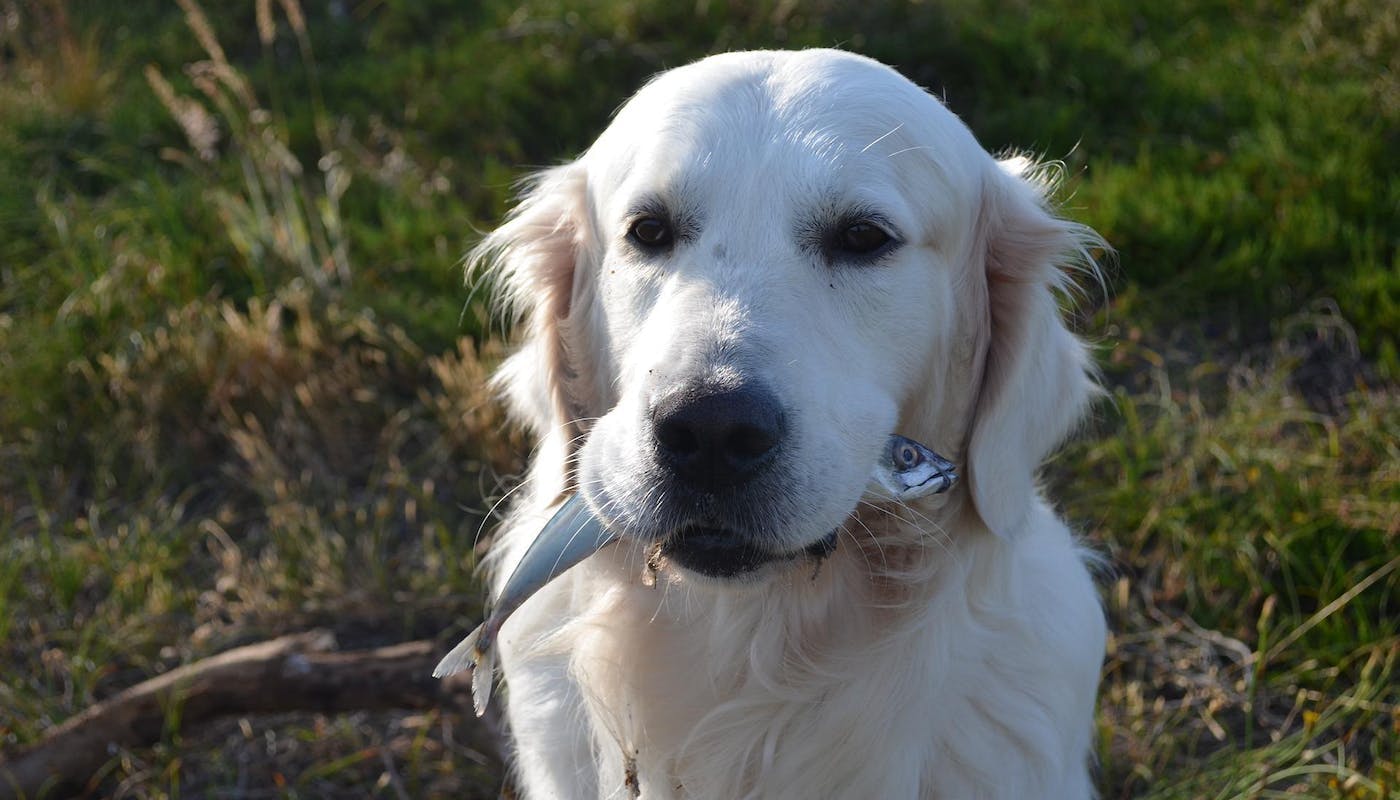Fish Oil For Dogs: What Do I Need To Know?
Fish oil is an essential ingredient in all dogs’ diets. Often referred to as Omega-3, it’s found in fish that delivers the nutrients your dog needs to maintain a healthy heart, coat, joints, and immune system, it’s easy to find in most dog foods. But if you think your dog might be lacking in fish oil, they’ll need either a long-term or fast-acting boost of Omega-3 to help support their health.
In this blog we will look at fish oil for dogs: what it is, the benefits, and how to feed it to your dog.
What Is Fish Oil For Dogs?
Fish oil is a dietary supplement that is high in Omega-3 fatty acids. This ‘good’ fat is essential to your dog’s diet as it supports healthy body and brain function. Dogs, like humans, can’t make Omega-3 on their own, so rely on dietary sources to give them as much as they need.
Omega-3 is found in cold-water fish, shellfish, some plant and nut oils, and flaxseed. It’s known to balance out intake of Omega-6, another fatty acid that is often found in processed dog foods that can cause inflammation. Omega-3 fights inflammation, so a balance of the two is essential to maintain a healthy level of both essential nutrients.
What Are The Benefits Of Fish Oil For Dogs?
It supports their heart health, keeps their coat sleek and shiny, prevents itchy skin, and even relieves allergies and joint issues. It also boosts their immune system, is believed to fight canine cancer, and some research shows it to treat arthritis and kidney disease.
If your dog is lacking in Omega-3, or is suffering from one of the issues listed above, your vet may prescribe an Omega-3 supplement to help give them a boost. This could be a long-term solution or a temporary measure depending on their specific needs.
A component of Omega-3 is DHA, which helps the development of the brain and eyes in puppies, and can improve cognitive function in older dogs. So it’s an essential ingredient that supports their changing health needs throughout their lives.
How Do I Know If My Dog Has A Fish Oil Deficiency?
If you notice your dog is suffering from a dry coat or hair loss, weight gain and obesity, eye issues, muscle weakness, or if their wounds aren’t healing efficiently they may be lacking in Omega-3.
Though there is no one clear symptom of this deficiency, you should seek medical attention and ask your vet if they would recommend your dog be put on a diet with increased Omega-3 intake.
How Should I Feed Fish Oil To My Dog?
Most good dog foods will contain the level of Omega-3 your dog needs each day to remain healthy. The three main Omega-3 fatty acids are alpha-linolenic acid (ALA), which comes from plant sources, and eicosapentaenoic acid (EPA) and docosahexaenoic acid (DHA) which both come from fish oil.
The most common forms of Omega-3 fatty acid as a supplement are natural triglyceride oil, which is the most natural and easiest to absorb, Ethyl ester oil, which is concentrated and distilled to remove impurities, and Synthetic triglyceride oil, which is synthetic and doesn’t absorb as easily.
Though you should always consult a vet before adding new supplements or other additions to your dog’s diet, Omega-3 is a vet-approved and mostly safe supplement as long as you know how much to administer for your dog’s unique needs.
Fish oil can go rancid quickly, so should be stored in dark bottles in the refrigerator. It oxidizes easily so should be kept away from heat, light, and air.
Front of the Pack’s air-dried food is rich in Omega-3 fatty acids. It’s made with Omega-3 fish oil, non-GMO sunflower oil, Antarctic krill, and organic kelp which are all rich in the essential fat. The vet-approved formula is designed to be good enough for humans to eat – and we bet you’ll recognize every ingredient on the label. Air-dried to a jerky-like consistency, it’s a quick and fuss-free way to give your dog every vitamin, mineral, and nutrient they need to stay healthy, all in one handy scoop.
